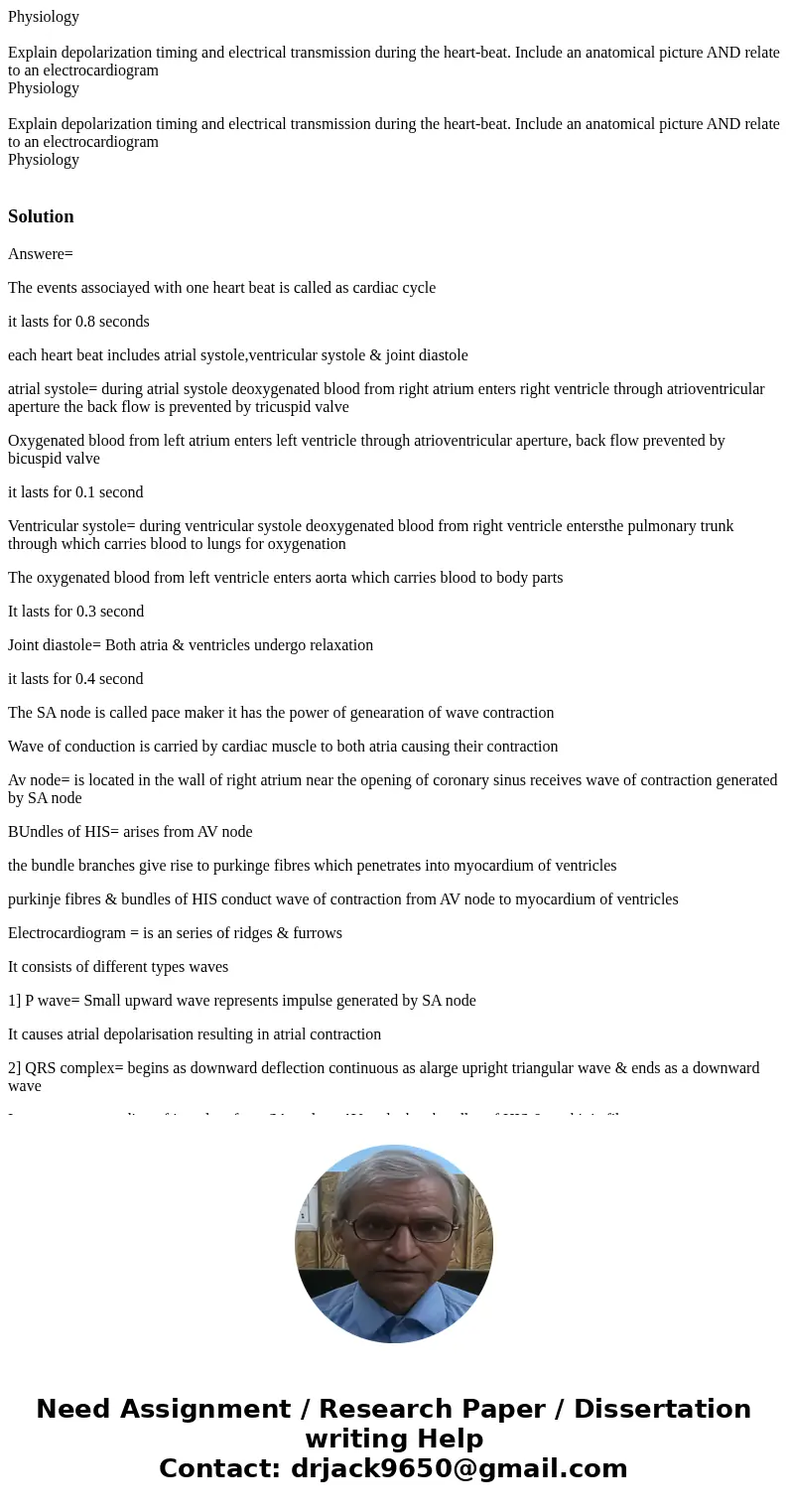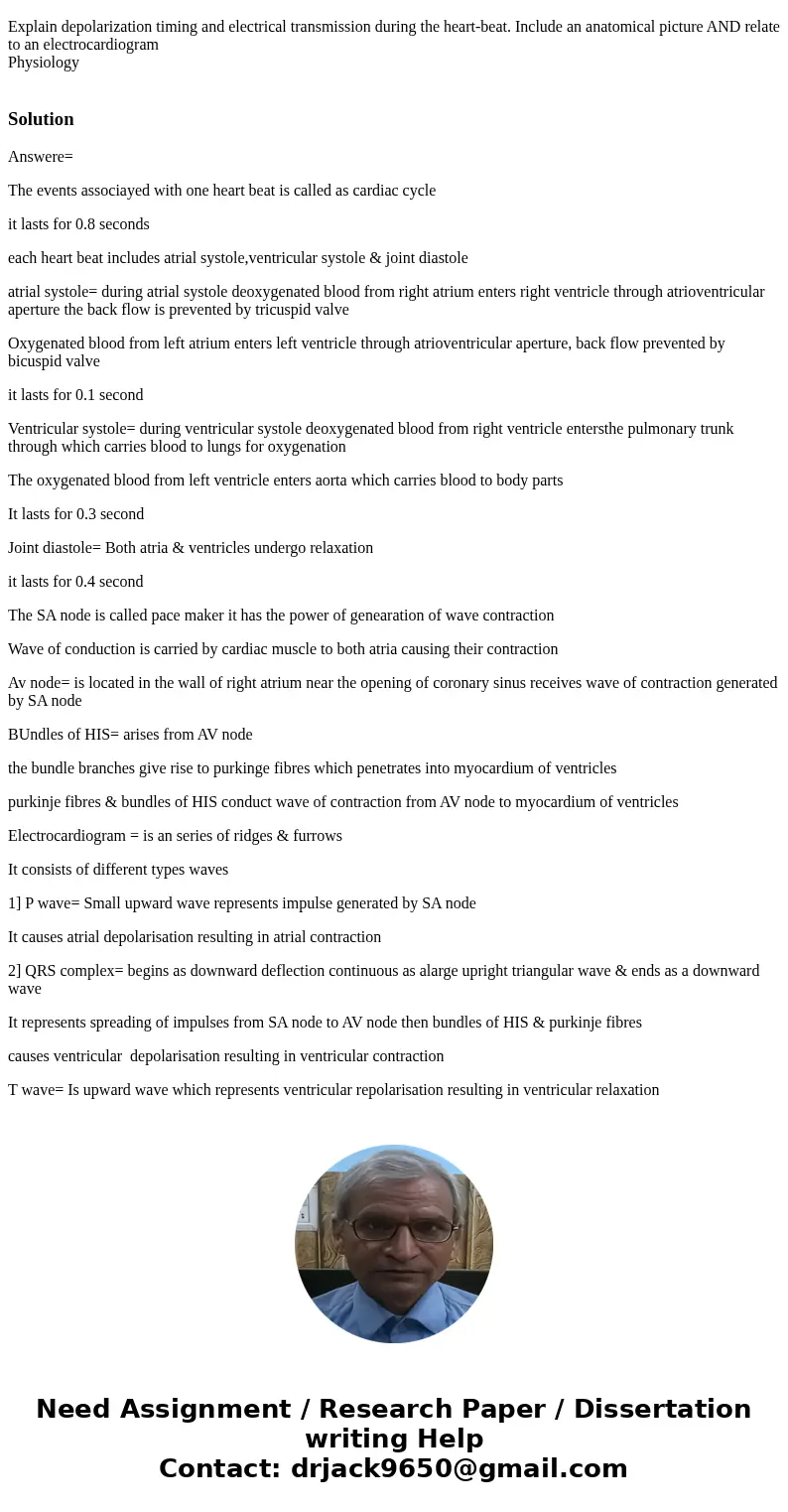Physiology Explain depolarization timing and electrical tran
Solution
Answere=
The events associayed with one heart beat is called as cardiac cycle
it lasts for 0.8 seconds
each heart beat includes atrial systole,ventricular systole & joint diastole
atrial systole= during atrial systole deoxygenated blood from right atrium enters right ventricle through atrioventricular aperture the back flow is prevented by tricuspid valve
Oxygenated blood from left atrium enters left ventricle through atrioventricular aperture, back flow prevented by bicuspid valve
it lasts for 0.1 second
Ventricular systole= during ventricular systole deoxygenated blood from right ventricle entersthe pulmonary trunk through which carries blood to lungs for oxygenation
The oxygenated blood from left ventricle enters aorta which carries blood to body parts
It lasts for 0.3 second
Joint diastole= Both atria & ventricles undergo relaxation
it lasts for 0.4 second
The SA node is called pace maker it has the power of genearation of wave contraction
Wave of conduction is carried by cardiac muscle to both atria causing their contraction
Av node= is located in the wall of right atrium near the opening of coronary sinus receives wave of contraction generated by SA node
BUndles of HIS= arises from AV node
the bundle branches give rise to purkinge fibres which penetrates into myocardium of ventricles
purkinje fibres & bundles of HIS conduct wave of contraction from AV node to myocardium of ventricles
Electrocardiogram = is an series of ridges & furrows
It consists of different types waves
1] P wave= Small upward wave represents impulse generated by SA node
It causes atrial depolarisation resulting in atrial contraction
2] QRS complex= begins as downward deflection continuous as alarge upright triangular wave & ends as a downward wave
It represents spreading of impulses from SA node to AV node then bundles of HIS & purkinje fibres
causes ventricular depolarisation resulting in ventricular contraction
T wave= Is upward wave which represents ventricular repolarisation resulting in ventricular relaxation


 Homework Sourse
Homework Sourse